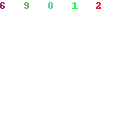Recent headwind in global economic outlook should deter BOC's tightening schedule. We believe the central bank will leave the policy rate unchanged at 1% in September. Indeed, Fed's decision to keep interest rates at exceptionally low levels at least until mid-2013 and the increasing downside risks to inflation signaled the BOC will leave the overnight rate unchanged at least until mid -2012. That said, it's also unlikely for the central bank to trim interest rates as headline inflation remains high and the job market is robust.
GDP contracted -0.4% q/q in 2Q11, following a downwardly revised +3.6% expansion in the prior quarter as deterioration in US economy dampened exports. Domestically, growth remained strong with business investment and household spending showing decent growths during the quarter. Headline inflation eased to +2.7% in July, from 3.1% in June and +3.1% in May, due to lower energy costs and changes in tax policy. Yet, inflation stayed at the upper limit for BOC's target. Core CPI rose to +1.6% in July from +1.3% in June. Employment increased only +7K in July after growing more than +20K in each of the past 3 months but the positive sign came from full-time payrolls which continued to rise. The jobless rate slid to 7.2% from 7.4% in June and May.



At the opening statement before the House of Commons Standing Committee on Finance, BOC Governor Mark Carney said that several downside risks, such as the intensified Eurozone sovereign crisis, the downgrade of US credit rating and weakness in macroeconomic data, to the central bank's July MPR projection have been realized. While the spillovers to the Canadian financial markets have been less 'pronounced', the impacts are still 'notable'. Carney stated that 'the considerable external headwinds' are now 'blowing harder' and Canada will have to adapt to a world that is 'awash with debt' and it will 'take years' for the balance sheets to be repaired. As a result, risks to inflation have also skewed to the downgrade as a result of 'somewhat weaker economic momentum globally'. Yet, it reminded us that growth will continue with acceleration being seen in the second half of the year, led by business investment and household expenditures.
We expect the BOC will deliver a less hawkish statement in September. In the July meeting, the central bank stated that 'some of the considerable monetary policy stimulus currently in place will be withdrawn'. That appeared to be more hawkish than the May statement which stated ''some of the considerable monetary policy stimulus currently in place will be eventually withdrawn'. The BOC this month may withhold the tightening rhetoric as policymakers may prefer to gather more information regarding global economic developments.











































